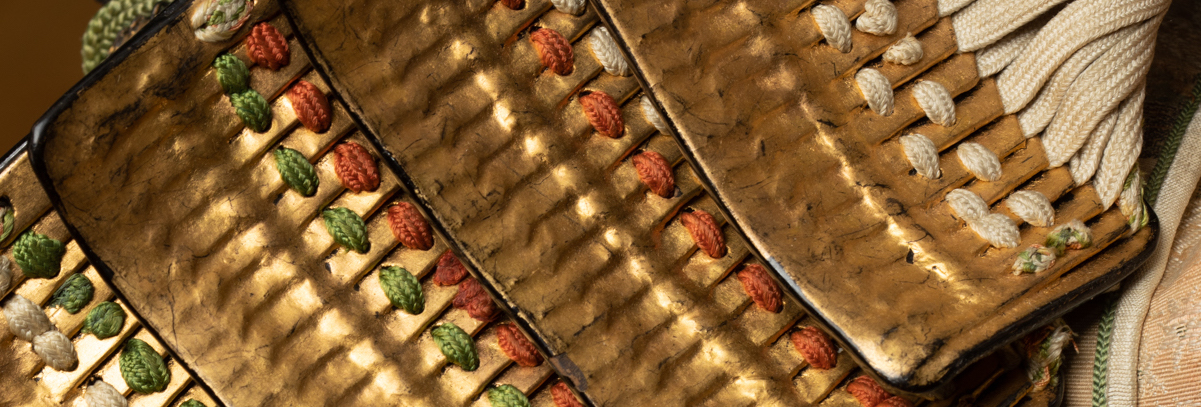Kozane: the Scales of the Samurai Armor
The Japanese armor has undergone numerous transformations over the centuries. Despite this, there are constant distinctive characteristics, despite these mutations. One of the most interesting and stable features of samurai suit of armor over time is the intricate texture of elements which form most of the elements of the armor. This is composed of iron or leather plates (kozane) of various sizes, joined by some kind of lacing (odoshi). When you want to buy a samurai armor for sale, it is good to know what are the features to look at before proceeding with the purchase.
Depending on the size of the plates and the type of lacing, we can be identify different types of construction. Among these, the most common are the following:
- Hon-kozane. The hon-kozane is the oldest form of construction, typical of medieval samurai armor. It was based on a lamellar structure with small lacquered plates, partially overlapping. The binding that joins these scales is extremely dense and takes the name of kebiki-odoshi: each scale is tied to those on the side by tight knotting (nawame garami), while it keeps the lower one suspended with a longer part of ito (kedate).

- Kiritsuke-kozane. The samurai armor made in kiritsuke-kozane are composed of long plates that simulate the hon-kozane by cutting and folding long plates of iron on which is applied a thick layer of lacquer. Thanks to this expedient, the armor-smiths managed to combine the beauty of the ancient armor with the practicality and lightness of the modern one; for this reason it was one of the most common construction methods during the 16th century, when battles between rival samurai clans were very frequent. Also for this armors, the lacing is kebiki-odoshi. As clearly evident in these two images, the difference between hon-kozane and kiritsuke-kozane is evident when looking at the back of the samurai armor plates.

- Iyo-zane. The iyo-zane technique involved a structure with larger plates and with less overlap than the hon-kozane, and therefore of simpler workmanship. The upper edge could be shaped with various forms; the most common are the koishi gashira ("pebble-shaped" or double semicircle) and the yahazu gashira ("arrow-feathers shaped"). The lacing associated with this process is called sugake-odoshi. Created to simplify the tying of large plates and to be easily repairable in the event of breakage, this technique provided that the ito were placed in pairs spaced apart. Furthermore, complex knots were not used and the lacing was threaded vertically, joining each plate with the one beside.

- Mōgami. The mōgami technique involved long rectangular flat plates covering the entire length of the individual element of the samurai armor. The lacing that was generally associated with these types of armor is again sugake-odoshi.

Copyright © 2016 - giuseppe piva - VAT: 05104180962

